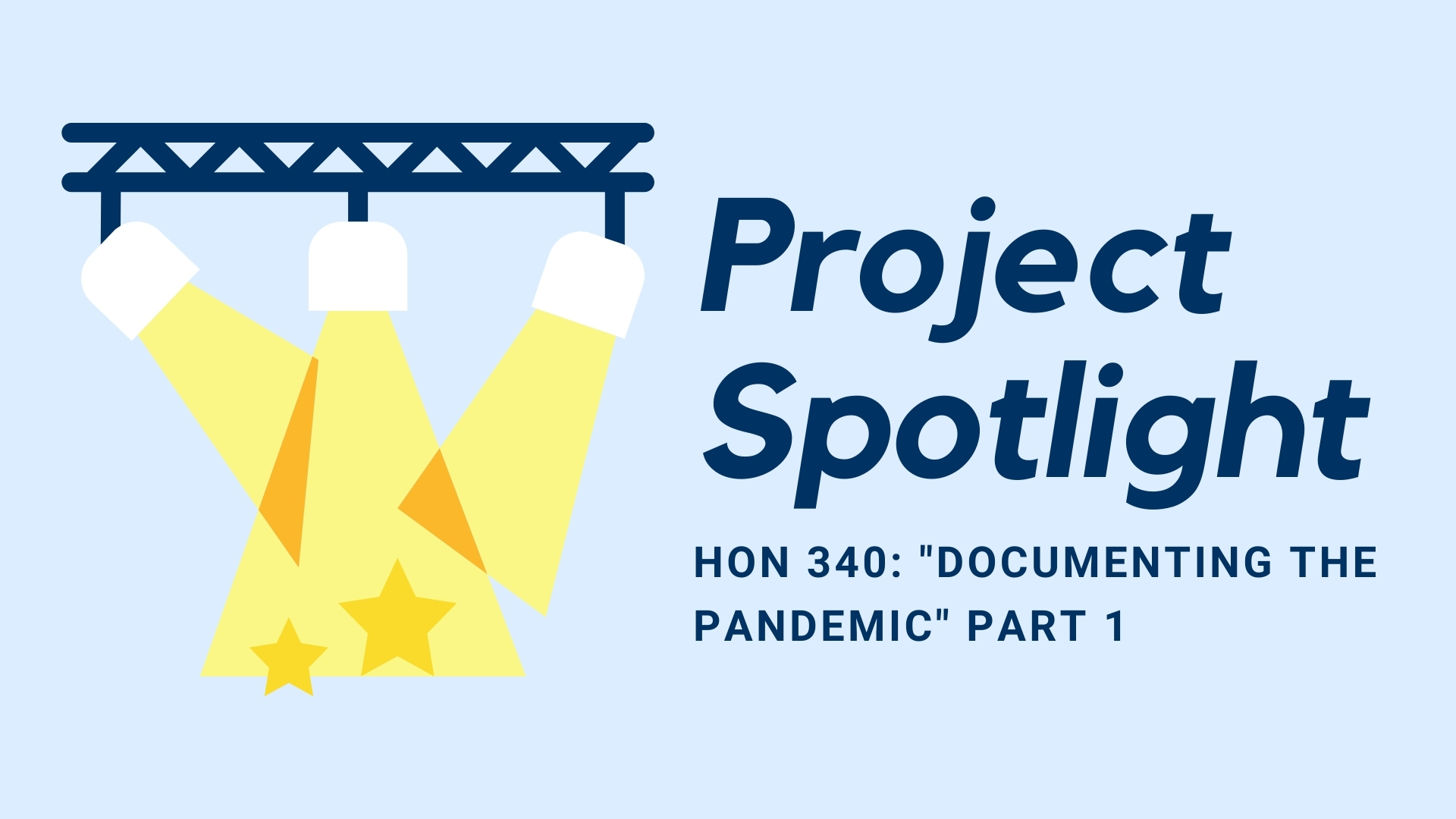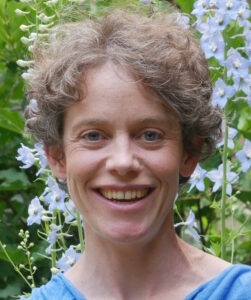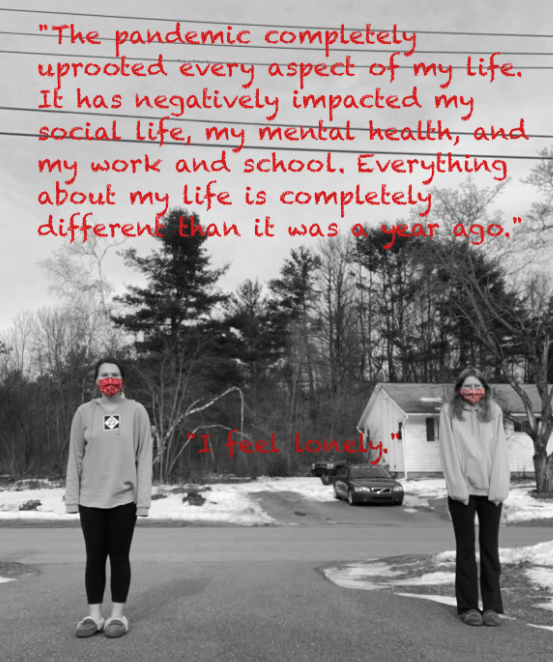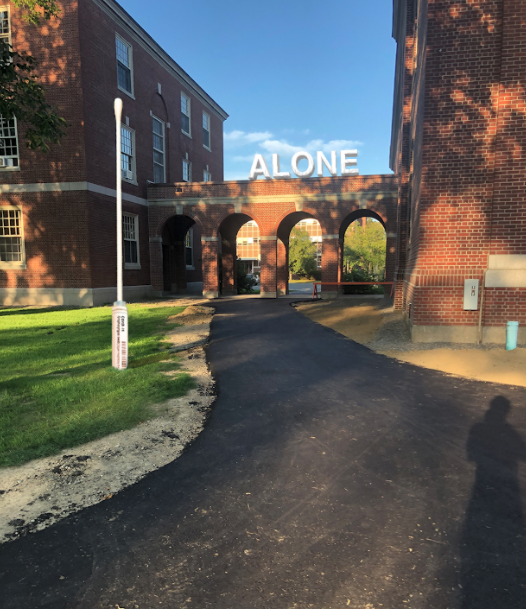
Project Spotlight: A Deep Dive into “Documenting the Pandemic,” Part One
Project Spotlight is a monthly series dedicated to sharing outstanding Honors projects, both in and out of the classroom. This month, we will dive into the Winter 2020 Honors Tutorial HON 340 “Documenting the Pandemic,” taught by Professor Katie Quirk. This interview with Professor Quirk is part one of a two-part series. An interview with Emily Kontio, HON 340 student, will be shared next week.

HC: What inspired you to propose “Documenting the Pandemic” as an Honors tutorial?
KQ: I was inspired by an article I read in The New York Times in which a group of academics made the call to #teachthevirus. I saw a real need among students to process their pandemic experiences, and I believe art provides an important avenue for reflection and for connecting with others. My background is in creative writing, so I pulled together narrative prose written in response to the virus, but I didn’t want to limit our study to creative writing, so I also added podcasts and a variety of visual arts to our reading list.
HC: Describe the process of setting up the course’s curriculum. What did you want to accomplish through the course, its readings, and its assignments? Did you accomplish these goals?
KQ: The course was a three-week intensive seminar. We spent the first week surveying a variety of arts forms and analyzing the artists’ craft choices. For example, in our study of a short story written by Tommy Orange, we considered his unconventional use of the second person and how it affected our reading. In the second week, we read and studied more mentor texts. On each of those days, students created what we called a “crummy first draft.” The idea was to seize upon a nugget of inspiration and to run with it, even if the product didn’t come out perfectly. In our final week, students created, workshopped, and revised a final project.
Throughout the course, we talked about the potential for art to spark conversation and social connection–two qualities we desperately need during this time. I required students to develop a plan for sharing their work, whether through submission for publication, installation, or some other forum. The results were wonderfully diverse–they included long-form poetry, public art installations, paintings and a scrolling comic.

HC: What was the HON 340 class environment like? What was it like bringing together an interdisciplinary group around a central theme like the pandemic?
KQ: To my knowledge, this was the first time that the Honors College offered a January-term course. We met four days a week, synchronously and online. I was worried that the 8 a.m. start time would be a challenge for students over break. There were a few cases of failed alarms, but I also received feedback from a number of students that they looked forward to class and to our conversations.
We had a wonderfully intimate group–seven students form a variety of disciplinary backgrounds and me. One mentioned at the end of the class that she had worried about taking a writing-intensive course taught by a professor with a background in writing, but that she ended up having fun experimenting with different writing forms. Students truly did experiment–two wrote essays in loose computer code, and another wrote her story of the pandemic in an annotated playlist.
HC: Did teaching this course change how you view the pandemic and its impact? What are your thoughts on using art and creative expression to document and process difficult events?
KQ: I knew from teaching first-year courses that the pandemic was placing unforeseen challenges on college students, including many mental health challenges. Because of the creative nature of this course, the students’ honesty, and our frequent meetings, however, I suddenly felt like I had a direct window into specific student experiences. For example, one of the students, Hua Lin, wrote a narrative essay describing the alien feeling of being channelled through a maze of upended furniture in the pandemic-safe dining hall while maintaining constant distance from peers. Jess Hutchinson created some stunning watercolors that evoke the loneliness and estrangement felt by many college students during this time. My sense is it was healthy for all of us to share creative work about the profound ways in which our lives have changed due to the virus.
HC: How do you inspire creativity in students who might not see themselves as artists or creative individuals?
KQ: The majority of the students in this course were STEM majors. I strongly believe that all of us have the potential and need to be creative, regardless of discipline. These students did not disappoint. They gave me the feedback that they benefited from starting the course by studying a variety of mentor texts–essays, podcasts, photographs, cartoons, murals, etc. During that time we were attending to craft choices: What’s the effect of viewing these photos in black and white versus color? How does the narrator’s casual voice impact your reading of the story’s events?
As we asked these questions during the first week, we were warming up and beginning to collect inspiration for our own work. Students in the tutorial group also said they also appreciated our second week of creating “crummy first drafts.” The goal there was to experiment, rather than to assume a need to create something that emerged polished. Much of that work was delightful and proved to be strong fodder for our third week and the students’ final projects.

HC: Comment on the outcomes of the course. Were there any unexpected moments or results? What were some highlights of the course for you as the instructor?
KQ: Highlights for me came in watching students experiment–some really stepped outside of their comfort zones and went above and beyond for their final projects. Two examples are the public art installations planned by Emily Kontio and Stephen Kaplan. Emily collected photos from more than 50 respondents who represented a variety of ages, geographic origins, and experiences of the pandemic. For each of them she assembled a photo of the subject with and without his mask on, as well as a quote about his experience. The assemblage of images and quotes is quite moving. Stephen manipulated photos of iconic UM settings. For me the collection evokes a variety of emotions–humor, sadness, curiosity, and loss. Both Stephen and Emily hope to install their work on campus this spring semester.
